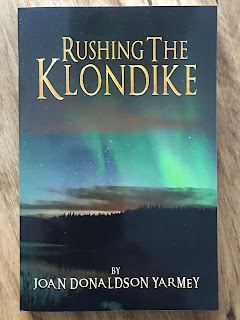https://books2read.com/The-Travelling-Detective-Boxed-Set
https://books2read.com/u/bapW6a
Canada’s Deserts
Only forty-one of the one-hundred ninety-five countries on this earth have deserts but the deserts cover almost one-third of the earth’s land mass. I am a Canadian writer and all my mystery, historical, romance, and young adult novels are set in Canada. Canada is the second largest country in the world and home to one desert and three pseudo-deserts. A pseudo-desert is defined as an area that has some of the qualities that make up a desert, but does not meet the technical standards to be termed a true desert
There are three main features of a desert: less than 250 millimetres (10 inches) of precipitation each year; sparse vegetation; and severe weather changes. Other characteristics include humidity, high winds, little cloud cover, and aridity. The types of deserts are semi-arid, cold, coastal, and hot and dry.
The people of the Southern Interior of British Columbia claim that Canada’s only desert is in the Osoyoos area. Many of the businesses in the region have the word ‘desert’ in their names, such as the Nk’Mip Desert Cultural Centre and the Osoyoos Desert Centre. Tourists come to this part of British Columbia to see this popular desert.
But others say that, although it does have desert type plants like cacti and animals such as the sage grouse and tiger salamander, it is not really a desert because of the precipitation which is 323 mm (12.7 in) annually. It is defined as a pseudo-desert.
Another pseudo-desert in Canada is the Carcross Desert, located outside the community of Carcross in the Yukon. At 2.6 sq km (1sq mi) it is called the smallest desert in the world. But while it is termed a desert it is actually the remains of an ancient glacial lake which left the sand dunes when it dried up. In spite of the strong winds from Lake Bennett which bring in more sand, kinnikinnick, Yukon lupine, Baikal sedge, and lodgepole pines are able to survive.
The local people used the dunes for sandboarding, hiking, beach volleyball, and all-terrain vehicles and there are scenic tours for tourists.
The third pseudo-desert in Canada is the Great Saskatchewan Sand Hills covering 1,900sq km (734 sq mi). Like the Carcross Desert they are desert-like sand dunes situated just north of the village of Sceptre in southwestern Saskatchewan. Also like the Carcross Desert, the hills were left when glaciers melted 12,000 years ago and are home to a variety of plants and animals that have adapted to the dunes.
The Canadian Arctic Tundra is considered the only true desert in Canada. However, it isn’t a hot desert; it is a cold polar desert and covers a large area in northern Canada. The land is covered by thick layers of ice instead of sand and has a cold, harsh climate with temperatures dropping as low as -40 degrees Celsius (-40F). Trees have a difficult time surviving in the permafrost during the short growing season so the tundra is covered mainly by small shrubs, mosses, and lichens. A number of animals--arctic hares, muskoxen, polar bears, arctic foxes, and caribou--manage to live in this cold desert in the far north because they have thick fur coats to keep them warm.

%20(515x640).jpg)
%20(427x640).jpg)

.jpg)










